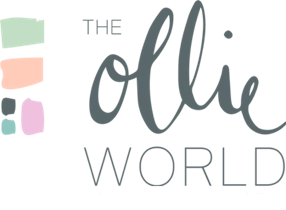What Is Mastitis? + How to Prevent It
2018-05-04

Oh the joys of breastfeeding! Everyone hears all these good things; have you heard any of the following?
"It's natural, so it's easy."
"Breast is best."
"It helps mom lose weight faster."
"You can't get pregnant while breastfeeding."
"It enhances the bond between mom and baby."
Wow! Not only are these not true for every breastfeeding mom, but society tends to conveniently omit the tougher parts. There are cracked and bleeding nipples, difficulty emptying breasts, engorgement, supply issues, clots, thrush, poor latches, leaking, spraying, and mastitis! Today, we are focusing on mastitis.
What exactly is mastitis? Mastitis is inflammation of the breast where an area of the breast is blocked from releasing milk. Because of this, redness, pain, and heat are present. Sometimes moms will also get a fever with accompanying flu-like symptoms, including body aches and chills. Mastitis is unfortunately pretty common in a mother's lactating journey and shows up, for most, during the first six weeks. Sometimes, though, a mother can get mastitis until she weans.
How can you relieve mastitis? Many moms talk about hot showers, heat pads, massage along the lump to the nipple, and pumping. It is such a sweet relief when you feel the blockage finally break through, and the knot subsides. Please note that if you are unable to release the blockage between 12-24 hours, it is recommended that you see your physician because medications may be prescribed to ensure that the infection doesn't spread, leading to further complications.
Even though this seems like an information overload, it's important to know and recognize the signs of mastitis, as well as the steps you can take to prevent it from happening to you. Make sure you take good care of your nipples to avoid cracking and bleeding (damaged nipples are more open to germs). Make sure to also speak with an IBCLC lactation consultant to help baby use a deep latch, as well as to promote fully emptying your breasts and responding quickly to the early signs of mastitis. Oversupply, weaning too quickly, blebs on the nipples, and skipping feedings/pumpings can contribute to mastitis, so make sure to be a little extra careful with these situations.
About the Author:

In 2016, Colson’s mom, Mia, faced significant challenges breastfeeding little Colson. An avid believer in the benefits of breastfeeding, she had also experienced a range of issues with her daughter two years earlier. After a lactation specialists told her that exclusively pumping would not work and she would never be able to provide enough breast milk to her daughter over the course of a year, she moved forward seeking support wherever she could. Within a few months, Mia had performed hours and hours of research and discovered a host of products to help her continue breastfeeding her daughter over the year. Mia discovered that many people simply gave up often breastfeeding for as little as a month to six weeks. In 2016, after struggling with Colson, she decided it was her mission to not only support women with strategies on how to face breastfeeding challenges, but also supply them products that assisted their efforts.
Mia met Jessica and realized the common passion they shared to bring a product to market that would help support breastfeeding moms, while also providing free boxes to assist those facing the additional challenges of nursing a baby in the NICU. Naming the company after their two sons—who are now thriving, active little boys—seemed only logical. On November 24, 2017, the company was officially launched with boxes shipping in January of 2018. In early spring of 2018, Colson & Joe will make its first donation of free boxes—fittingly, to the NICU at St. Joseph’s Hospital in Tampa where Joe spent the first few months of his life.
You can find Colson & Joe on their website, as well as on Instagram, Facebook, and Pinterest.
